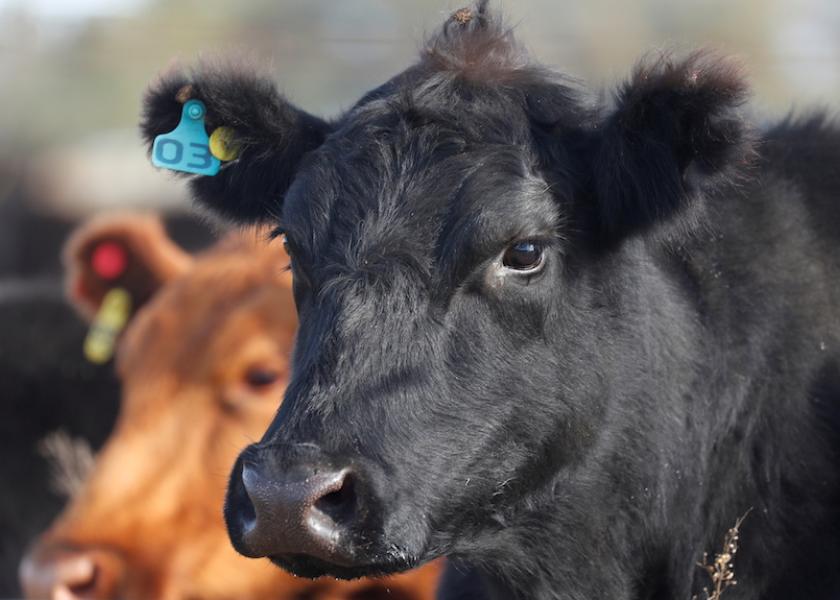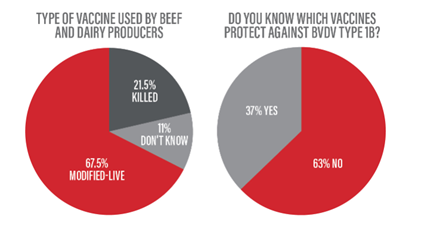New Research Sheds Light On The Continued Need to Address BVDV

This article was developed by Boehringer Ingelheim.
Results from a recent national survey of more than 800 beef and dairy producers show positive strides in the industry’s understanding and management of bovine viral diarrhea virus (BVDV), but the fight isn’t over yet.1
Key findings of the study:1
1) 81% of producers vaccinate for BVDV. Of those who vaccinate, 68% use a modified-live virus (MLV) vaccine. Broken down further, the survey shows that 63% of beef producers and 69% of dairy producers use a MLV vaccine. “We’re happy to see that percentage of producers using MLV vaccines, but we’d like to see this number continue to rise,” said Joe Gillespie, DVM, Boehringer Ingelheim.
Vaccinating cattle with a modified-live BVDV vaccine protects their health, reproductive efficiency and prevents persistently infected (PI) calves. “PI calves are the most common way BVDV spreads throughout a herd,” explained Dr. Gillespie, “and killed vaccines don’t provide complete PI protection.”
Figure 1. Results from a national survey of more than 800 beef and dairy producers
2) 53% of respondents know that Type 1b is the most common subspecies of BVDV, but only 37% know which vaccines protect against it. “Whether yours is a dairy or beef operation, when your cattle are exposed to BVDV, it’s very likely that you’ll be dealing with Type 1b,” said Dr. Gillespie. The most recent data on BVDVTracker.com show that out of more than 1,200 samples collected, Type 1b accounts for 71% of infections.2
“People assume that, if you’re giving a BVDV vaccine, you’re completely protecting that animal,” Dr. Gillespie noted. “But Type 1b is not commonly found in the antigens contained within most vaccines. You have to get that cross-protection and choose a vaccine that’s specifically labeled to protect against Type 1b. The right vaccine can help you avoid losses from BVDV such as infertility, pneumonia, abortions, stillbirths and immunosuppression down the road.”

3) 63% of producers do not test their herds for BVDV and those that do, don’t test often. 54% say the last time they tested was over a year ago. “Cattle are more mobile than ever before — and when they move to a new facility or are brought in from another area, we’re opening up the risk of spreading the virus,” said Dr. Gillespie. “Sixteen percent of the producers who tested their herd discovered BVDV, so we know it’s a more prevalent problem than we’re giving it credit for.”
If you’re seeing an increased number of animals getting respiratory disease or experiencing fertility issues such as decreased conception rates or pregnancy losses, that’s where testing for BVDV comes in. “To start, I recommend testing all calves,” Dr. Gillespie emphasized. “If you discover a positive case, then it’s time to go back and test the entire herd.”
Producers can test their animals for free through BVDVTracker.com. All samples submitted are anonymous and processed by the Animal Disease Research and Diagnostic Laboratory at South Dakota State University.
References:
1 A 12-question online survey of Midwestern and Southwestern dairy and beef producers. Survey results included the percentage of producers who were aware of the threat of bovine viral diarrhea virus, especially Type 1b; those who tested for BVDV; those who knew about the efficacy of Boehringer Ingelheim vaccines in controlling the disease, etc.
2 Data on file, Boehringer Ingelheim and BVDVTracker.com. Data collected November 1, 2018, through November 1, 2020.
3 Ridpath JF, Lovell G, Neill JD, et al. Change in predominance of bovine viral diarrhea virus subgenotypes among samples submitted to a diagnostic laboratory over a 20-year time span. J Vet Diagn Invest 2011;23(2):185–193.








